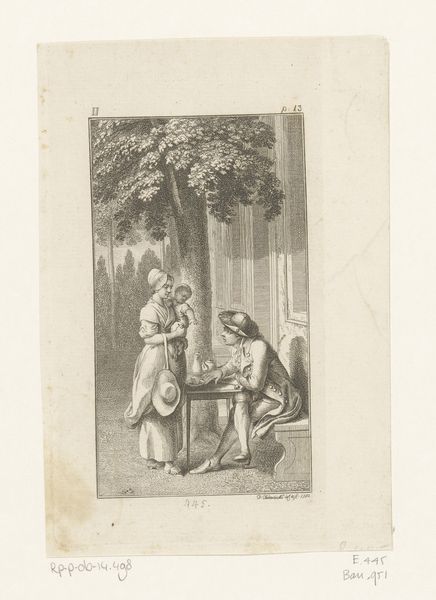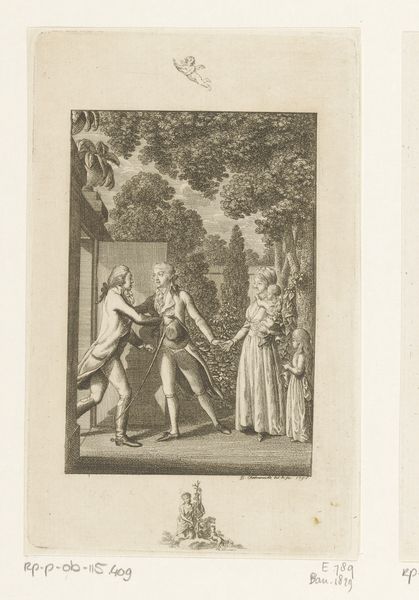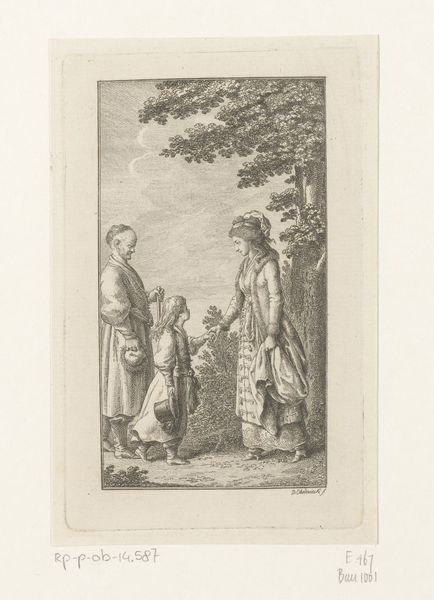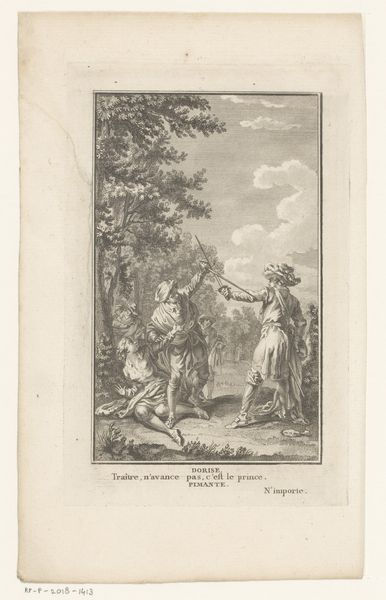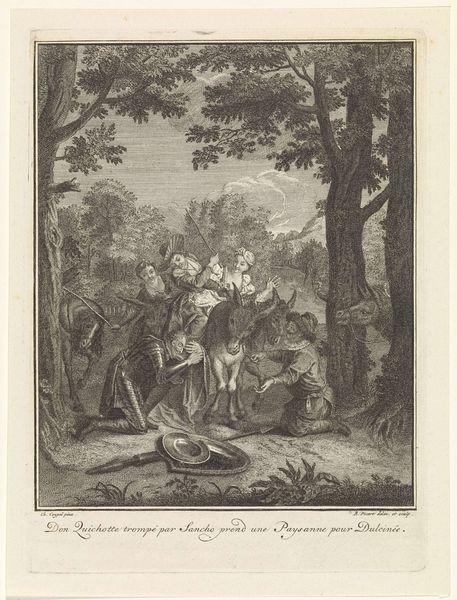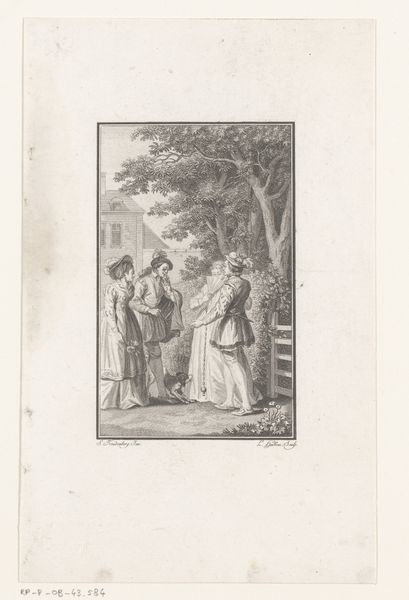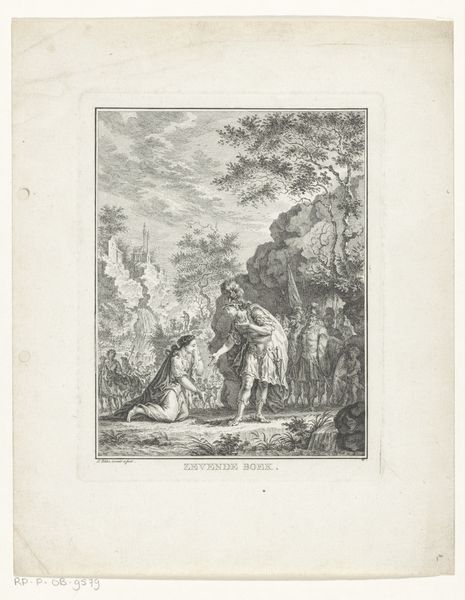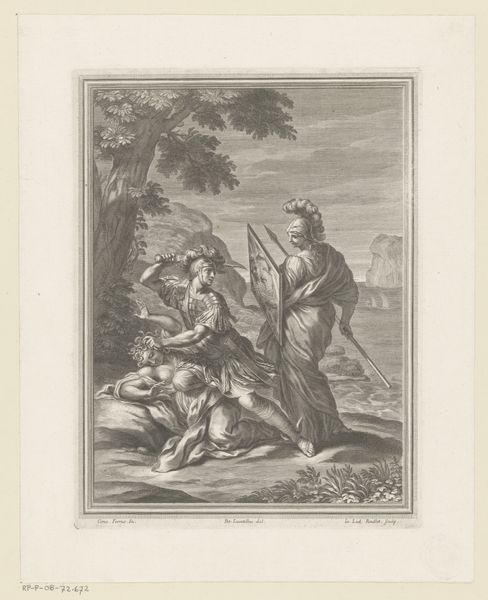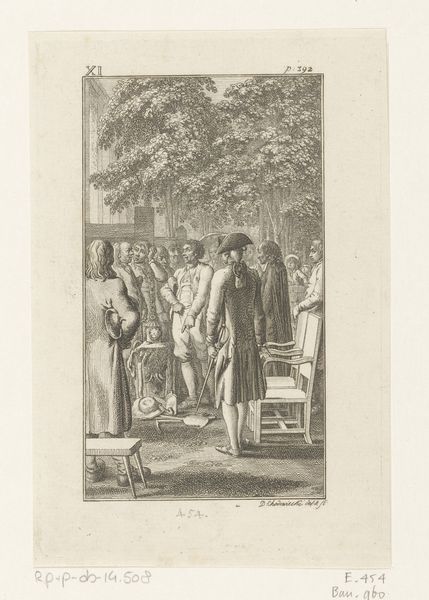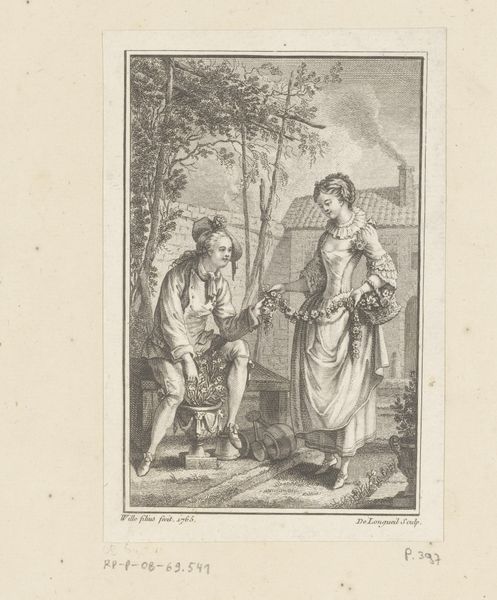
print, engraving
#
neoclacissism
# print
#
dog
#
landscape
#
figuration
#
line
#
genre-painting
#
engraving
Dimensions: height 165 mm, width 103 mm
Copyright: Rijks Museum: Open Domain
Editor: Here we have Daniel Chodowiecki’s engraving, "Gustav Sleeping by the Rose Bush", from 1792. It’s a simple line drawing of figures outdoors, seemingly preoccupied with a small dog. What strikes me is its ordinariness. How should we read such an everyday scene from that period? Curator: That perceived ordinariness is precisely where its historical value lies. Genre scenes like this, particularly in print form, offered a window into the aspirations and values of the rising middle class. The detailed linework allows for an accessible depiction of idealized domesticity. Editor: Idealized? How so? Curator: Consider the setting: a cultivated garden, a well-dressed family interacting harmoniously. The playful dog functions as a symbol of loyalty and familial connection, all reinforcing the image of a contented bourgeois life. What is missing? Editor: You mean... social commentary or obvious signs of poverty, something of that nature? Curator: Exactly! By omitting any elements that would disturb this vision of tranquility, the artist participates in shaping a specific cultural narrative about social stability and domestic bliss that are key to the Neoclassical pursuit of harmony. Do you see a relationship with visual culture of our present? Editor: I suppose it does remind me of aspirational lifestyle marketing we still see today... promoting similar kinds of idyllic contentment. That's something I hadn't considered! Curator: These images worked then, as they work now, to subtly promote social norms and desired roles within society. Think about the power dynamics at play when observing everyday life.
Comments
No comments
Be the first to comment and join the conversation on the ultimate creative platform.
